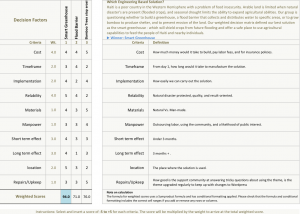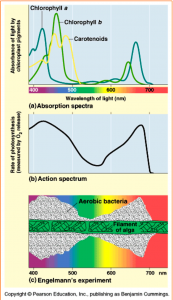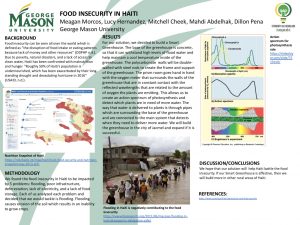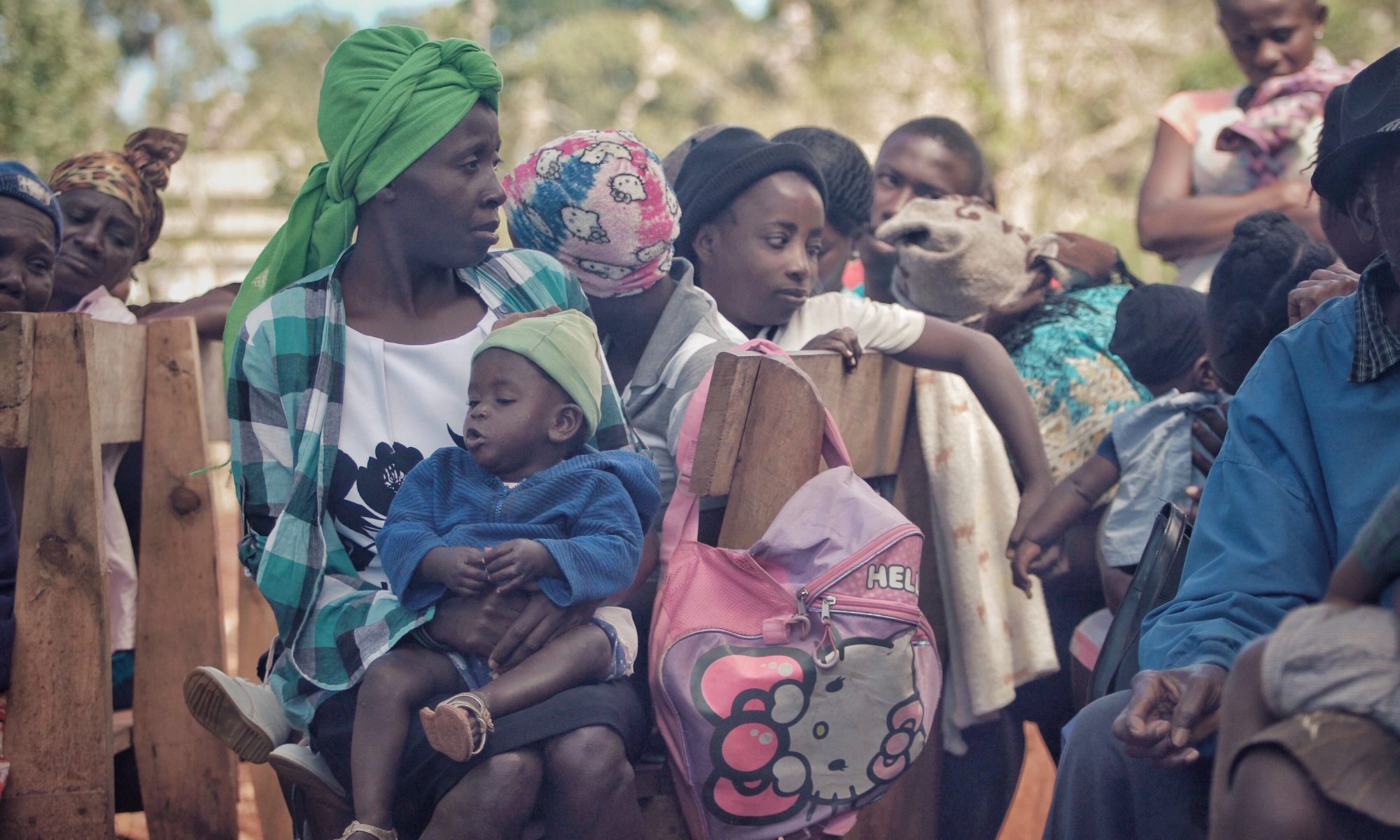April 8,2019
Five Problems Identified:
- Haiti’s lack of water, we discovered that clean water is very scarce in the country, especially after the earthquake in 2010 since it destroyed many wells and water systems (Water in Crisis, n.d.). Not having easy access to clean water affects Haitians’ lives in many different aspects such as children missing school in order to retrieve water, massive outbreaks of cholera due to unsanitary conditions, and food insecurity.
- Haiti’s infrastructure. Infrastructure includes road systems, public and government institutions, and other common areas where people get to the water source. Poor infrastructure restricts the people of Haiti to produce economic power and sustain mobility to and from resources.
- Deforestation and climate change. It has led to an increase in “flooding, dramatic rates of soil erosion, and subsequent declines in agriculture productivity” (Environment, 2018), making the land not suitable for growing crops.
- “Haiti is facing two energy challenges: a broken electricity sector and dependency on charcoal” (Energy, 2018). This issue has led dark nights to the people of Haiti. The way this contributes to food insecurity in Haiti is that without proper electricity, they are unable to have proper food preparation,
- Improper food storage can lead to the rotting of fruit and meats and other foods. By not having the proper food storage the people of Haiti are unable to keep the little food they have for long, so they often go with only eating one meal a day or even less.
Decision Making Matrix

April 10, 2019
Three Possible Solutions
- Brita Well
- The first solution is inspired by a Brita Filter. Due to the prior damage the 2010 Earthquake has called many of the wells in Haiti have been damaged and the water is not as clean anymore. Our solution would implement a constant filtration system to assure that any contamination that goes into the water is filtered out. The well would have separate underground tubing that would reach crops and water them from underground so that Haiti’s crops can flourish.
- Heat Well
- Our second solution like the first is also a well. But in this case to keep the water clean it would be heated at a constant temperature through the use of solar panels. Water would be delivered to the plants and also have a spout so that people can access the water.
- Desalination Plant
- Our last idea is inspired by the desalination plants in the middle east. The desalination plants take salt water from the ocean and make it fresh water. The issue with the desalination plants in the Middle East is that they are too large and take too long to be built. Our idea would make mini desalination plants but they would be connected to select rural farms that have the most arable land to assure that crops can grow. The plants will have a tubing system to deliver fresh water to crops and to rural homes to provide water.
April 15, 2019
Never ending number of solutions?
- The issue of trying to find a clean source of water and trying to solve food insecurity in Haiti has many solutions. But are they all feasible? When looking for solutions we would find one but an issue would arise on how we would execute that solution. So what we did was come up with a large list of options to solve the issue. Even though we thought we had found three solutions prior to this we came to realize that there are always a million other ways to fix an issue. So without further ado we present the list:
- Filtered pipes underground that feed into wells to deliver clean water to crops.
- Heated pipes in wells powered by solar panels
- desalination plants that connect to greenhouses
- UV flashlights distributed to Haitians to disinfect water (solar powered)
- distributed boiling system (hand-held, portable stove) to clean water
- Community stove to boil water
- Fog nets to collect water and deliver to both rural and urban areas of Haiti
April 17, 2019
- The issue of food insecurity isn’t only an issue seen in Haiti, it is seen in hundreds of other countries. But the issue with Haiti is that they are the poorest country in the western hemisphere. Haiti has seen numerous natural disasters in the past and has had a government that isnt willing to help the people out. Their unemployment rate is over 90% and it continues to get higher everyday. Their education system is lacking teachers willing to teach students for free because there is no money to go around. With no money available there is no way to buy food so a lot of the times they go without eating. A documentary titled “In Haiti: A Road Trip Documentary” they film a market where women sell “clay cookies” because there are not enough crops to actually sell or food to actually buy to make. So we figured if we want to help solve food insecurity we have to find a way to help Haiti help themselves as a community. The last solution we came up with was inspired from a drip irrigation system that is known to save water especially during the drought seasons. But theres a spin to this drip irrigation system. The drip irrigation system would be connected to a basin built at the bottom of mountains that collect rainwater and gets filtered in the basin or it could be connected to the fog nets that collects precipitation droplets. From there would create a grid system of the tubing to allow shut off of water to certain plants so that they dont get over watered. But the trick here to figure out which plants are in neet of more water would be a scanner that detects the level O2 being released by each plant. The amount of O2 released from a plant is used to measure the rate of photosynthesis. If there isnt enough O2 then there isnt enough water to begin with.
From there we would encourage the growth of rice, corn, beans, wheat, and other grains. Also have them plant fruit trees and bamboo to increase the growth of trees in Haiti. The crops they would grow would them be delivered to the urban areas and given to those that need it in return they would get seeds to replant the crops and the cycle would continue to make sure crops are being grown and delivered to stop the food insecurity in Haiti.
April 22, 2019
Every issue in this world has multiple solutions. When thinking about the issue of food insecurity there are many problems that need to be fixed. But it is too difficult to pinpoint what the biggest issue is. Our last solution was a drip irrigation system that just made sure that the crops had water when need be. But we did not think about Haiti’s ongoing issue of flooding and the aftermath that one flood has on Haiti. A reason why the flooding is so bad in Haiti is because of the lack of trees that have been cut down. But of course trees take longer to grow and since less that 2% of a Haiti has trees this would take a lot longer to fix. So we changed our issue from obtaining a clean water source to stopping the harm that flooding has on the crops.

April 24, 2019
From the above matrix we thought of 3 solutions to the flooding issue in Haiti. From the three solutions we selected the smart greenhouse to be the nest solution. The reason being is because we are able to have a complete controlled environment regardless of rain or shine. Greenhouses have always been a go to when wanting to grow things year round. But our house is not your regular greenhouse. It is a smart greenhouse, yeah smart, s-m-a-r-t.
But now a little lesson on Biology to fully understand why this greenhouse is so smart. In 1883 and scientist, Theodor Engelmann performed an experiment to see what wavelengths were best absorbed and were most effective at performing photosynthesis in various plants. He used a prism to refract the light ( which is what our entire roof will be) so that the plants would either absorb the wavelength or reflect it. He “He placed aerobic bacteria (require O2) with the alga to determine which segments of the alga were performing the most photosynthesis and thus releasing the most oxygen”. (PleasantVille). What he concluded that at certain wavelengths certain plants perform photosynthesis the best with the amount of water they absorb which is shown by the amount of Oxygen they release. So if it is a low percentage of oxygen being measured the plant is not performing photosynthesis at is max potential and could be related to the fact that the plant is lacking water. Because the oxygen released from plants comes from the hydrolysis of water.

Our greenhouse will have these oxygen meters surrounding every wall of the greenhouse. They will all be connected to the main “motherboard” system that is in charge of controlling the greenhouse. The system will also be connected to the pipes that surround the plants and are underneath the plants as well.
Information from Engelmann experiment retrieved from:
http://hs.pleasantvilleschools.com/ourpages/auto/2015/8/28/47882927/Theodor%20Engelmann_s%20experiment.pdf
April 29, 2019
Continuing from last class, we began to think about how exactly the greenhouse was going to be powered and who would keep up with the maintenance of the main system.
In Haiti “Only about one-quarter of the population had access to electricity prior to the 2010 earthquake, and that remains the case today”( USAID, 2018). This issue is one that we had to think about when trying to power this greenhouse. The main solution is solar panels because Haiti does have plenty of sunny days that will provide the greenhouse with plenty of energy to allow all of the plants and crops to flourish. Solar panels are also very easy to maintain and they last about 30 years without any need for maintenance.
Now for the maintenance of the entire greenhouse, we plan on getting help from Hatians to help us build the greenhouse. This gives us the opportunity to show them exactly how its being put together and to let them feel like they are making a change themselves by building something that will benefit them. Of course we will have some of our volunteers year round in Haiti to help with the maintenance when something does go wrong and needs extra care.
In our health education piece highlighted all of the main factors of the greenhouse. We also talked about what we wish to achieve with the greenhouse. The education health pieces were written in both english and creole Haitian.
May 1, 2019
To this day we continued to think about other factors of the greenhouse that need to be paid attention to. One being where are we getting the materials to build it, or the money. Well like most NGO’s, donations are the easiest way to gain money to purchase the materials. Often times larger building companies will also donate the materials needed. We would also attempt to take a money loan from the world bank in the efforts of helping increase Haiti’s food production. Of course it will always be difficult to completely change Haiti’s food insecurity but making small changes can help direct the countries path towards a brighter future. Planting one seed at a time can be the first step towards a big jump!

May 9, 2019

